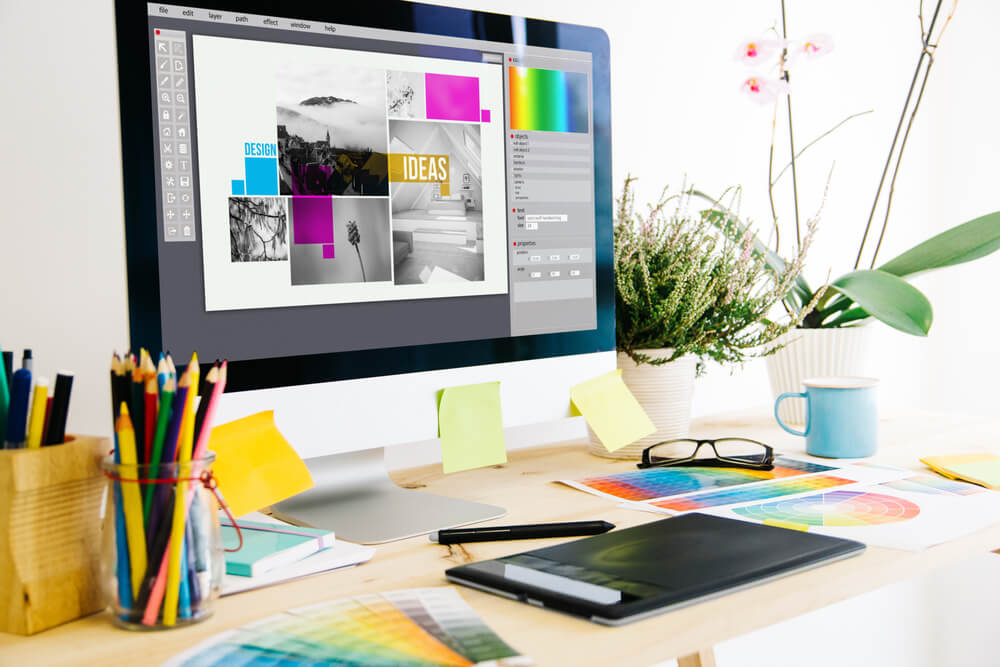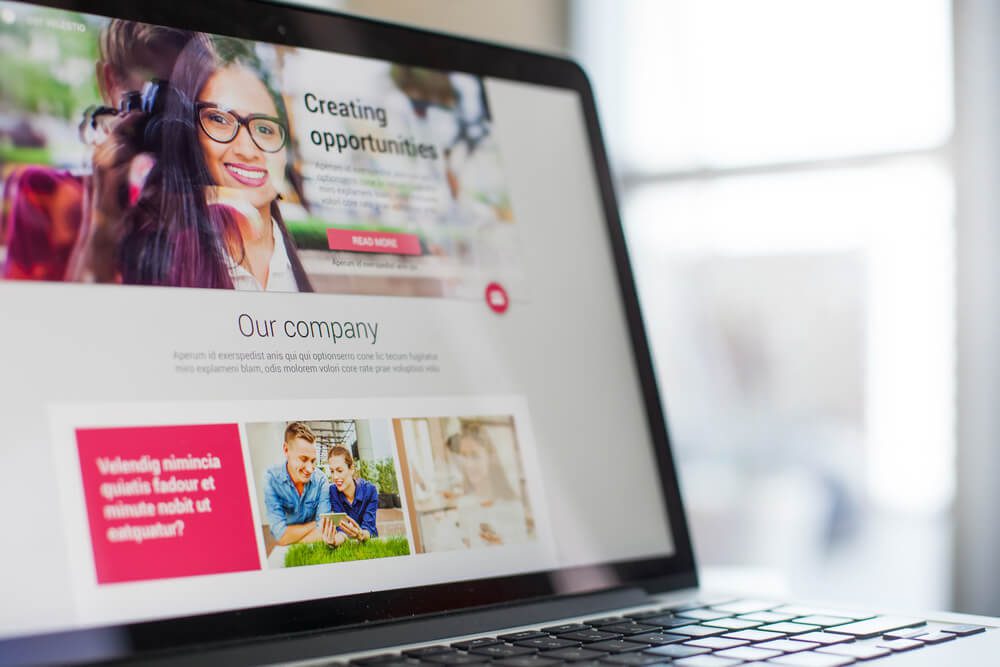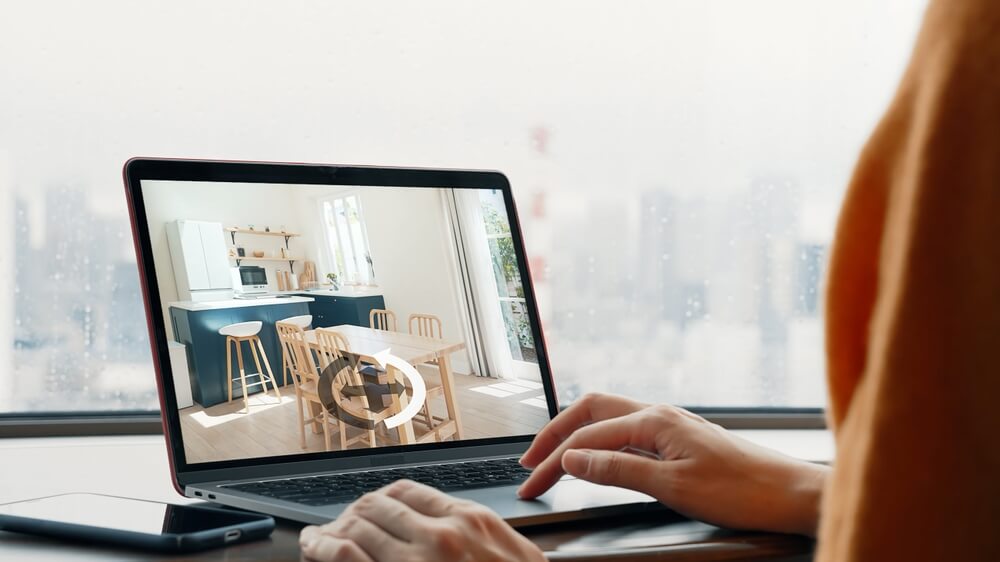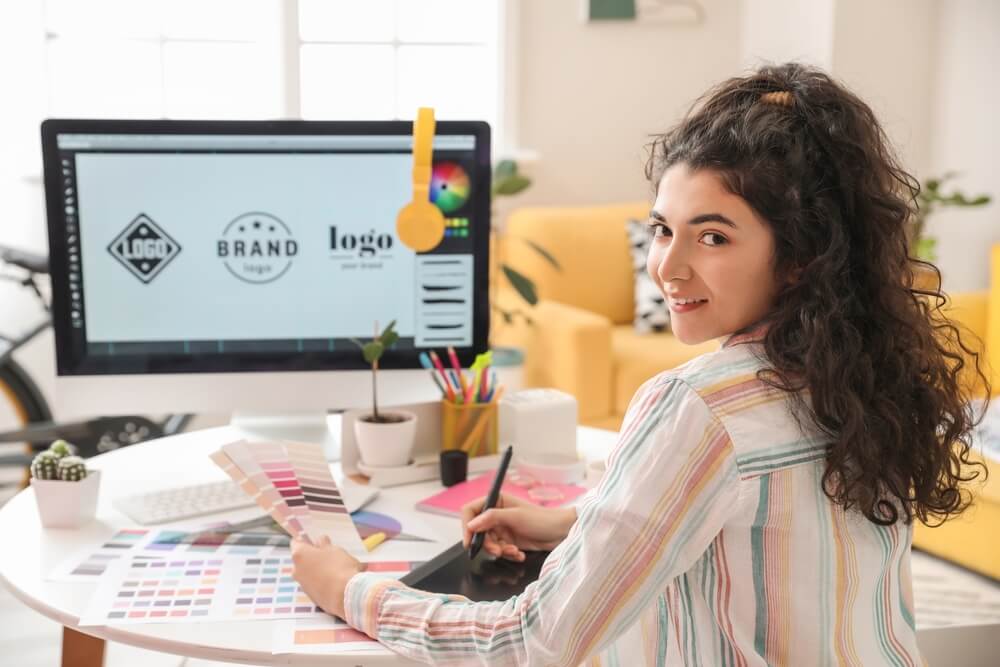
Digital Design Types and the Best Ways To Use Them
A memorable user experience (UX) sells. Maximizing digital design is one of the most effective strategies to achieve this.
This blog post highlights the seven most popular types:
- Web design
- Videos
- Augmented and virtual reality (AR/VR)
- Mobile design
- Animation
- UI and interactive design
- Graphic design
How does each work? What are their features and applications? Read the article below to learn more about digital design, especially when developing a brand identity. Let’s go!
1. Web Design

Web design is the process of planning, executing, and organizing the various page elements for the Internet. Consider it your “physical home” in cyberspace (while the domain is your address).
It can be basic, with a few static pages (ideal if you are merely building a portfolio), or comprehensive and enterprise-level, such as most ecommerce sites. Either way, web design today follows the fundamental principles of UX design, all of which put the users’ needs front and center.
A perfect example is Apple. Adhering to its design philosophy of simplicity, functionality, and elegance:
- It uses high-resolution and meticulously composed photographs of its products, usually appearing in bold or silver colors, which amplify their premium quality.
- White space is common to draw a person’s attention to the product.
- Its two typeface families, New York and San Francisco, support various font sizes, languages, and styles. This way, texts are readable and understandable.
- Urgent calls to action (CTAs) such as “buy” are clearly indicated with a blue button. Apple avoids overwhelming the users, especially since it sells tech, but keeps CTAs minimal on every page.
- Apple often introduces interactive sections, especially for new product launches. Users experience some features firsthand.
2. Videos
With the continued growth of social media, videos currently rank as one of the most powerful—and versatile—digital design types. Here are some video use cases:
- Tutorials, how-tos, and brand stories for content marketing
- Livestreams and user-generated content (UGC) for social media
- Product announcements and embedded videos for email marketing
- Optimized tags and descriptions for search engine optimization (SEO)
- Video ads for display or pay-per-click (PPC) advertising
- Explainer videos for landing pages and sales funnels
- Product demos for e-commerce pages
- FAQ videos for customer support
Videos also work well because people can see the action. This is especially true for those in tourism and hospitality. A 2023 study revealed that those with first-person narratives and scenes showing activities could improve travel intentions.
3. Augmented and Virtual Reality (AR/VR)

Augmented reality (AR) and virtual reality (VR) are different technologies. While AR adds another layer to the real world, VR puts users in a completely simulated environment. However, they both share an immersive experience created by specialized tools.
Because these innovations are new and expensive, adopting them can be challenging. Some of their applications also serve as proof of concept. Some of their present uses include:
- Virtual try-on
- Interactive packaging revealing content such as recipes or brand stories
- Location-based promotions
- Gamification
- Shopping experience
- Product demonstrations, such as car test drives
- Property tours
4. Mobile Design
Although mobile and web design nowadays are interrelated, they still differ significantly in many ways.
- Web design usually involves designing for larger screens such as desktops and laptops. The real estate of mobile design is much smaller. Furthermore, laptops can handle more complex processes and applications because they contain more hardware. This factor affects website speed and, therefore, UX.
- User interactions rely on tapping, swiping, pinching, and long-pressing on mobile devices. This level of engagement is more limited on desktops and PCs.
- In web design, users typically access pages in environments conducive to longer, more focused sessions. Mobile devices are notorious for short, unfocused usage.
- Mobile platforms, such as iOS and Android, have specific design guidelines for designers.
Mobile design is also heavily linked to the development of apps that have changed how we do business and live our lives. This includes the following:
- Messaging and video-calling
- Social media
- Streaming services
- Mobile games
- Productivity suites, such as Google Workspace
- Project management tools, such as Asana
- Cloud storage
- Ecommerce sites
- Financial technology (fintech), such as cryptocurrency wallets
- Ridesharing
- Health monitoring
- Elearning platforms
- Home automation
5. Animation

Animation existed long before it became a staple in films. The seventeenth-century magic lantern was a device that used a mirror and a light source to project illustrations from glass slides. Sequentially arranging these slides created a movement effect, marking it as the precursor to “moving pictures.”
Now, it is a versatile form of digital design meant to captivate audiences and simplify complex ideas. You can use it to:
- Create static images, such as logos that “move” during intros and outros, for more memorable brand impressions.
- Make the website more interactive with hover effects, transitions, and tactile feedback.
- Add depth and interest without overwhelming content with background animations.
- Break down or teach technical concepts in a more engaging way.
- Spice up videos and display banner ads.
- Showcase product features, benefits, or processes through animated simulations or visualizations.
- Bring characters and actions to life for gamification.
- Inject humor or fun storytelling with GIFs and memes.
- Let users interact with their virtual or augmented environments.
6. UI and Interactive Design
User interface (UI) and interactive design are two primary components of an effective digital design, especially when developing mobile platforms or software. Both amplify the user's connection.
- UI covers all the visual elements, from layouts to buttons, typography, icons, and graphics. All these help develop a more intuitive, organized, and aesthetically pleasing interaction with the product.
- Interactive design studies how the product responds to user input and incorporates the information into future iterations. This way, the app, for example, continues to be useful, engaging, and understandable to its audience. It covers feedback, flow, navigation, and gestures, among others.
When used together, they help develop the following:
- Interactive product previews, dynamic shopping carts, and intuitive checkout processes
- Intuitive task management UIs and collaboration tools
- Digital kiosks in malls, museums, and transportation hubs
- Wearable technology
- Artificial intelligence (AI) dashboards
- Route customization and real-time feedback when using maps
- Virtual consultations
- Real-time health metrics, feedback, and alerts
- Investment simulators in fintech
7. Graphic Design

Many still treat graphic design as completely different from digital design. Graphics are often static, while digital design is more fluid, interactive, and immersive.
However, present technology has blurred the thin line separating them. With motion graphics, augmented reality, and responsive designs, what was once static can now come alive. If not, it supports the other types on the list to enhance visuals, functions, and branding.
Graphic design in digital contexts is omnipresent. It serves as the visual foundation upon which many digital designs are built. Here are some real-life examples, use cases, or applications of graphic design within the sphere of digital design:
You can use graphic design to create:
- Icons, buttons, and other decorative elements,
- The visual look of apps, including navigation components,
- Custom images, such as profile pictures or cover photos on social media,
- Logos,
- Infographics,
- Ad banners or interstitial ads,
- Video thumbnails,
- Email headers and footers, and
- Branded digital assets, such as wallpapers or screensavers.
Summing Up
The role of digital design has gone beyond visual appeal. It encourages users to stay longer, improves the user experience, and even optimizes the website for search results. All these drive your metrics such as conversion and return on investment (ROI).
You can combine various types to amplify your message and build a unique brand. However, this requires a thorough understanding of your niche, design expertise, and customization.
As a leader in digital design, Digital Authority Partners (DAP) has helped 77.5% of our clients achieve better ROI after a redesign. Would you like it to happen to your business too? Contact us to learn more.
Want To Meet Our Expert Team?
Book a meeting directly here




